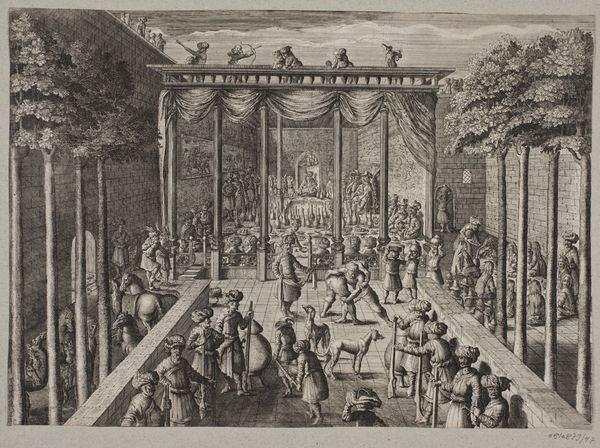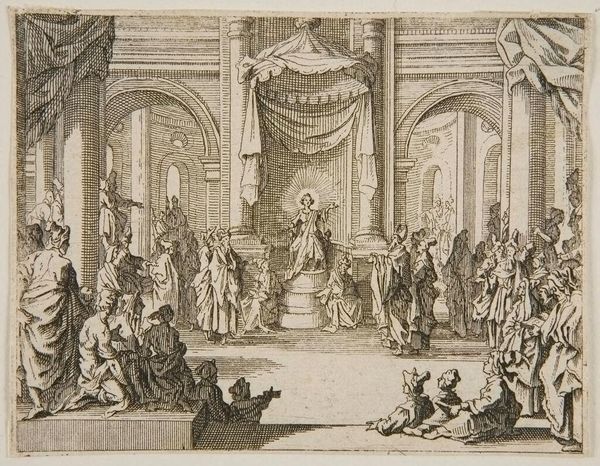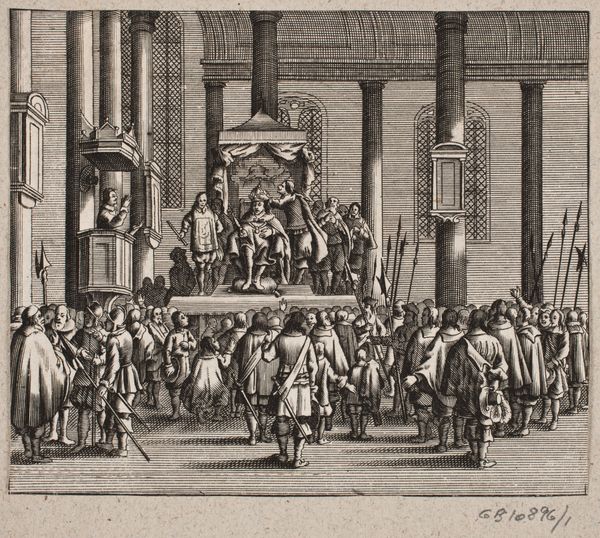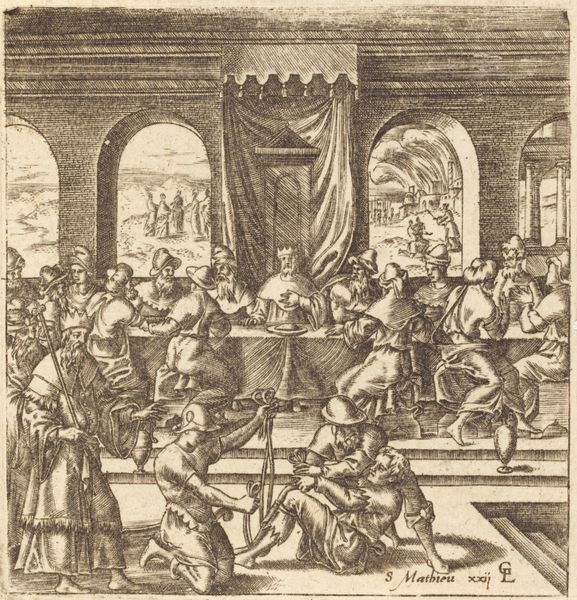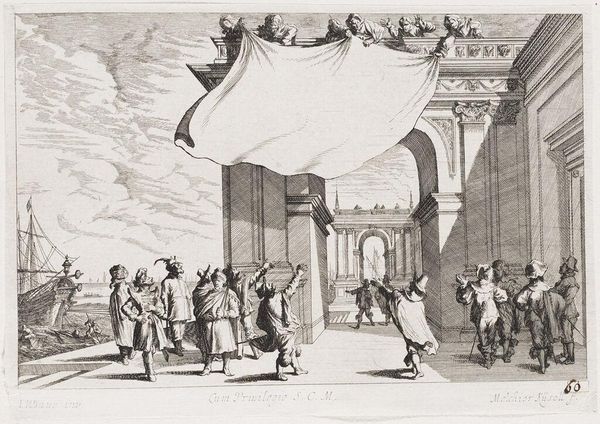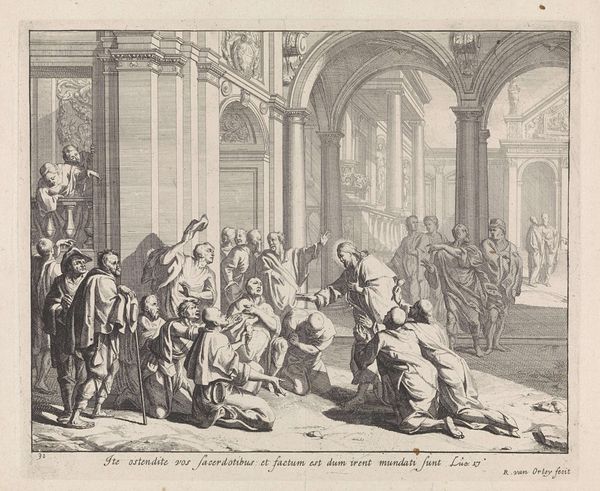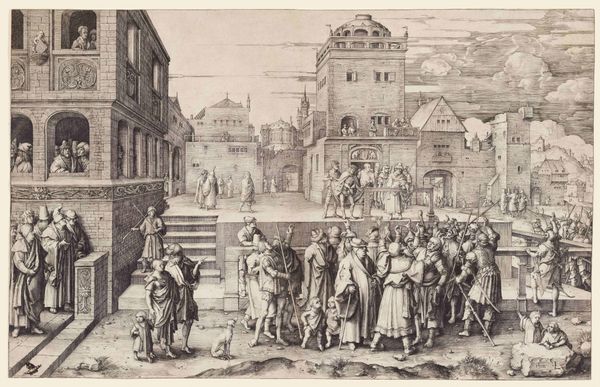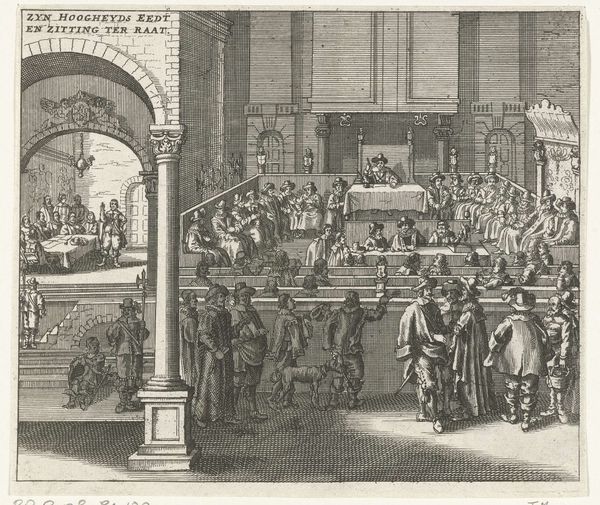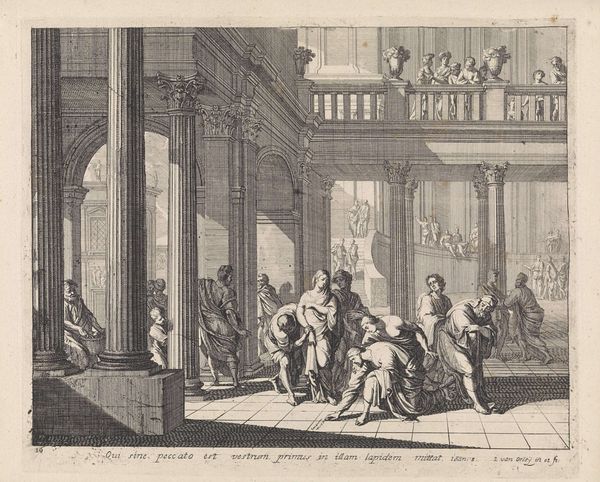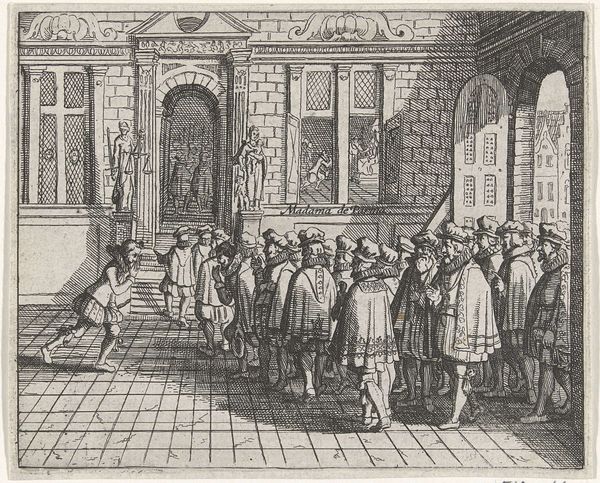![Illustration til Adam Olearius, “Persianischer Rosenthal von einem Sinnreichen Poeten Schich Saadi […]”, Schleswig 1660 by Christian Rothgiesser](/_next/image?url=https%3A%2F%2Fd2w8kbdekdi1gv.cloudfront.net%2FeyJidWNrZXQiOiAiYXJ0ZXJhLWltYWdlcy1idWNrZXQiLCAia2V5IjogImFydHdvcmtzLzQzNmQ1YTA4LWJjOGMtNGExNi1iNGJhLTQwODlmZjA2MTQzZC80MzZkNWEwOC1iYzhjLTRhMTYtYjRiYS00MDg5ZmYwNjE0M2RfZnVsbC5qcGciLCAiZWRpdHMiOiB7InJlc2l6ZSI6IHsid2lkdGgiOiAxOTIwLCAiaGVpZ2h0IjogMTkyMCwgImZpdCI6ICJpbnNpZGUifX19&w=3840&q=75)
Illustration til Adam Olearius, “Persianischer Rosenthal von einem Sinnreichen Poeten Schich Saadi […]”, Schleswig 1660 1660
0:00
0:00
print, engraving
#
baroque
# print
#
history-painting
#
engraving
Dimensions: 102 mm (height) x 138 mm (width) (bladmaal)
Curator: This engraving by Christian Rothgiesser from 1660, is titled "Illustration til Adam Olearius, ‘Persianischer Rosenthal von einem Sinnreichen Poeten Schich Saadi,’ Schleswig 1660." Editor: Wow, it's a flurry of activity frozen in time! There's something almost stage-like about the composition with those arches receding into the distance, yet all the figures seem rather…stiff? Curator: Well, consider the historical context. These engravings often served to document and disseminate information about other cultures. Olearius's account of Persia was groundbreaking, and Rothgiesser's illustrations would have been crucial in shaping European perceptions of the region. The emphasis here isn’t on individual expression so much as clarity of information, so to answer you question on the scale of expressiveness – a minimal one, that's for sure! Editor: True. And the starkness of the engraving – it makes me think of printed news. No messing around, right? But looking at it, it strikes me as odd that the figures have european characteristics. Curator: Yes, that points to the artistic and cultural conventions of the time. The labor involved in producing and distributing prints like this was significant. Woodcut and engraving were the main image reproduction techniques in Northern Europe at the time. This piece serves not only as a document of another land, but also as a showcase of printmaking expertise. And, who held the economical power and who commissioned. This could lead us down a different conversation path... Editor: A fair point, indeed. The technical skill here is certainly evident in the detail of the architectural elements. And even though figures seems stiff, there's still a dynamism. Also, looking at that detail of the carpets or garments... it does attempt to create the eastern feel and touch through ornamental and abstract decorations... It all speaks to a yearning for somewhere exotic, translated through the European lens. Curator: Exactly. And by viewing such engravings, it opens up fascinating considerations of cultural exchange and appropriation and also the mechanics behind image distribution and how the printing revolution shaped not just art but also science and history itself. Editor: Yes, looking closely has revealed something hidden in this picture: it may reflect the vision of other lands but perhaps, it’s the European cultural perception that’s portrayed more prominently. Thanks for sharing! Curator: You're most welcome! It has been great sharing notes on the material and cultural conditions that determined the artwork.
Comments
No comments
Be the first to comment and join the conversation on the ultimate creative platform.
